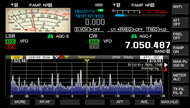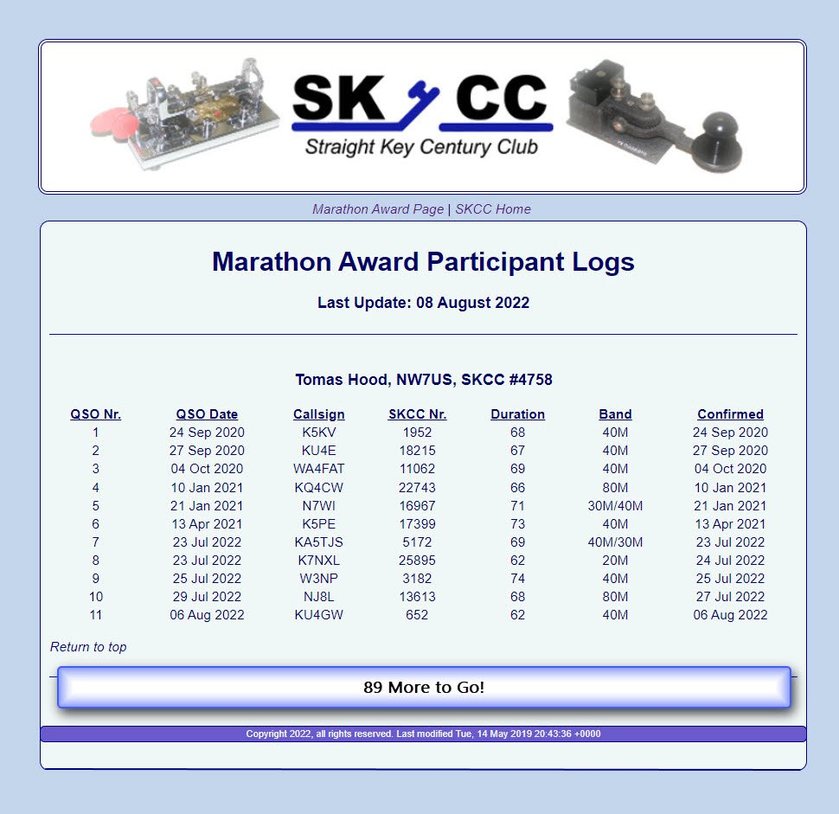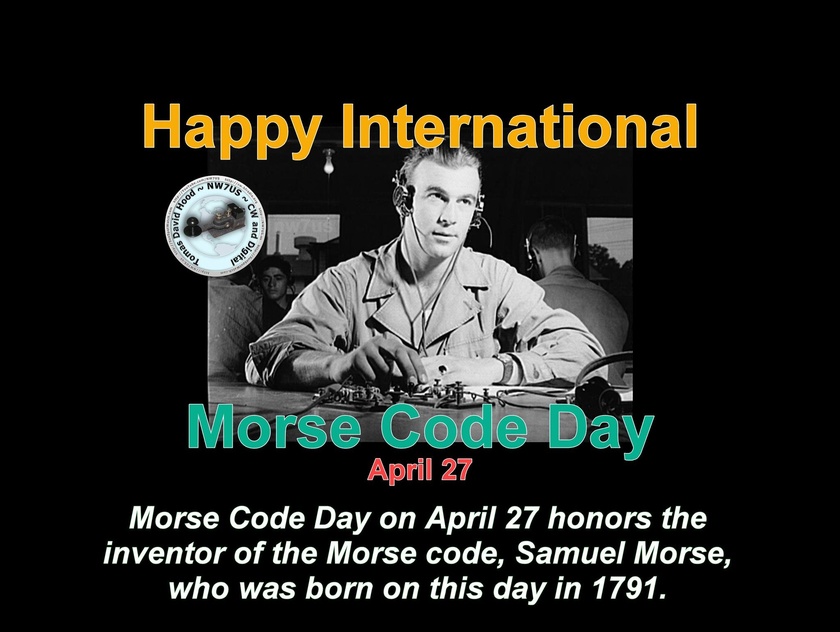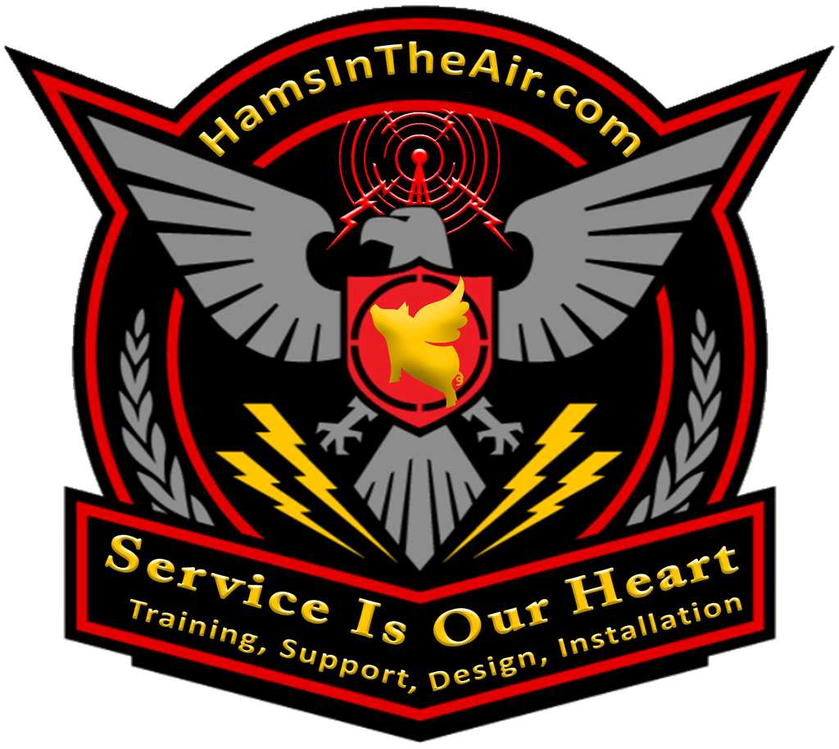
Thanks, Cliff Fox, for my 11th Marathon QSO. Just 89 more to go, and I will have accomplished 100 different one-hour-long CW two-way radio conversations (that is, by Morse code, using a straight key), with 100 different SKCC members.
Reference: https://www.skccgroup.com/operating_awards/marathon_award/
To earn the Marathon Award, one must engage in 100 QSOs, each 60 minutes or longer, and each with a different SKCC member using SKCC qualified keying devices. There is no time limit to earn the award but only QSOs logged after 0000Z 1 January 2008 count.
Members who achieve the Marathon award will receive a special commemorative plaque.
Rationale: Create a true operating challenge that involves the fundamental ideals of ham radio as celebrated by SKCC: operating skill, a good station, conversation skill, and a consistent, quality fist. Create an award that cannot be achieved easily or quickly yet promotes quality content in every contact. The Marathon Award requires people to actually ragchew. Ragchews build camaraderie and long-term friendships. These are ideals worth working for.
The Marathon Award has been deliberately designed to be a challenging achievement for an Amateur Radio Operator. Ragchewing is an art. Anyone can send a brief exchange in a few seconds and move on. Engaging the other station in an extended, informative, and entertaining exchange for a lengthy period requires real skill, a quality station, and a creative mind. The intent of the Marathon Award is to recognize these rare and special talents with the highest level of ragchewing recognition created to date. Few will be able to earn this award.
73 de NW7US dit dit
..

Morse Code Day on April 27 (every year) honors one of the inventers of the Morse code, Samuel Morse, who was born on this day in 1791.
Samuel Finley Breese Morse (April 27, 1791 – April 2, 1872) was an American inventor and painter. After having established his reputation as a portrait painter, in his middle age Morse contributed to the invention of a single-wire telegraph system based on European telegraphs. He was a co-developer of Morse code and helped to develop the commercial use of telegraphy.
Alfred Vail developed the dot-dash structure and Leonard Gale along with Vail was instrumental in developing the mechanical receiving apparatus for code.
Samuel Morse though gets most of the credit because of his work in promoting this code as a viable means of communication, that is still used now. Amateur radio is one of the communities in which Morse code is popular and in daily use.
73 de NW7US dit dit
https://NW7US.us

I used to post amateur radio videos to my YouTube channel, but then life got in the way. Well, I'm coming back to it.
I posted my new, latest video to YouTube:
#hamr #hamradio #amatradio #amateurradio #amateur #ham #radio #videos #youtube #youtuber #YouTubers #hobby #kitten #cat #feline #pet













